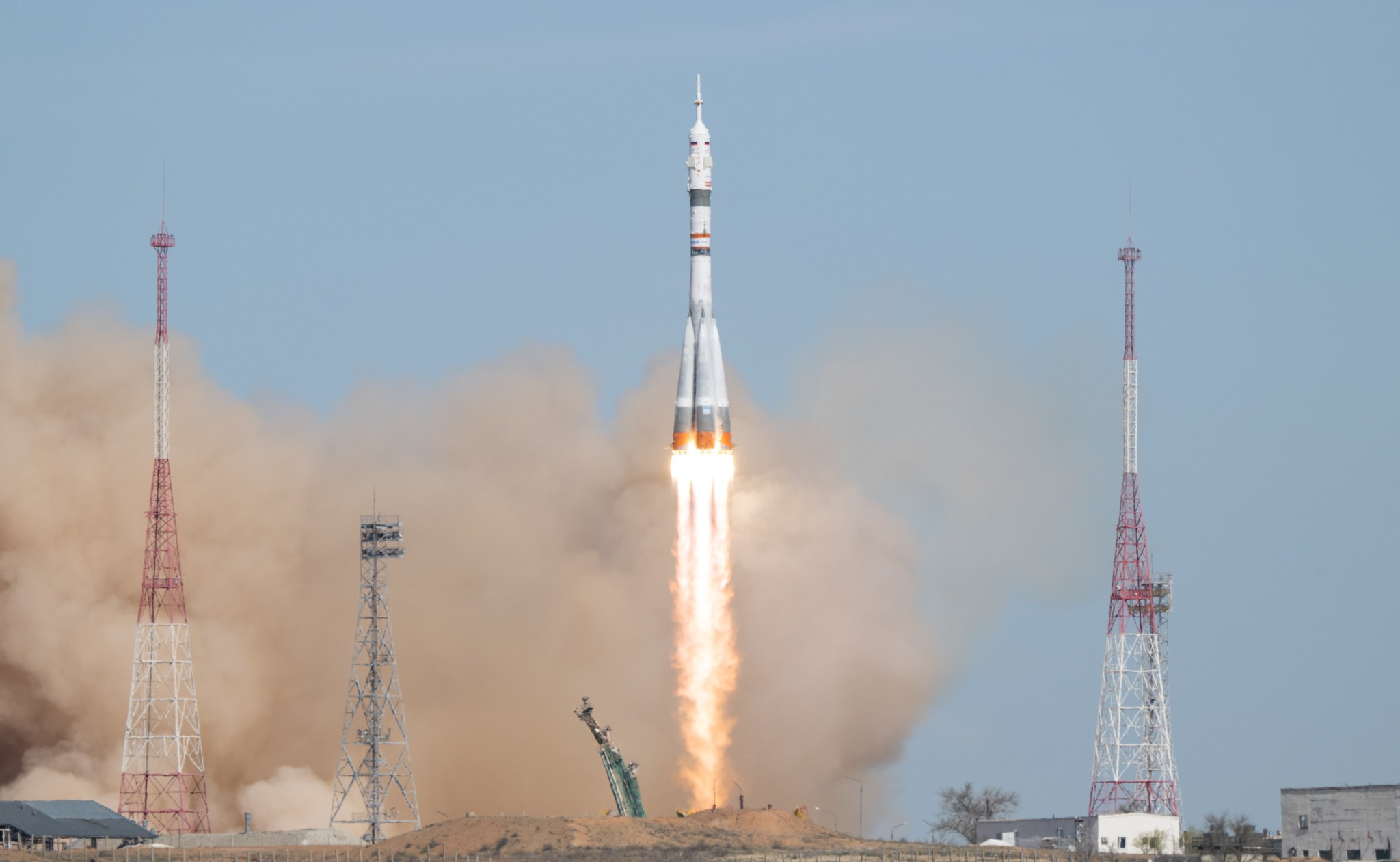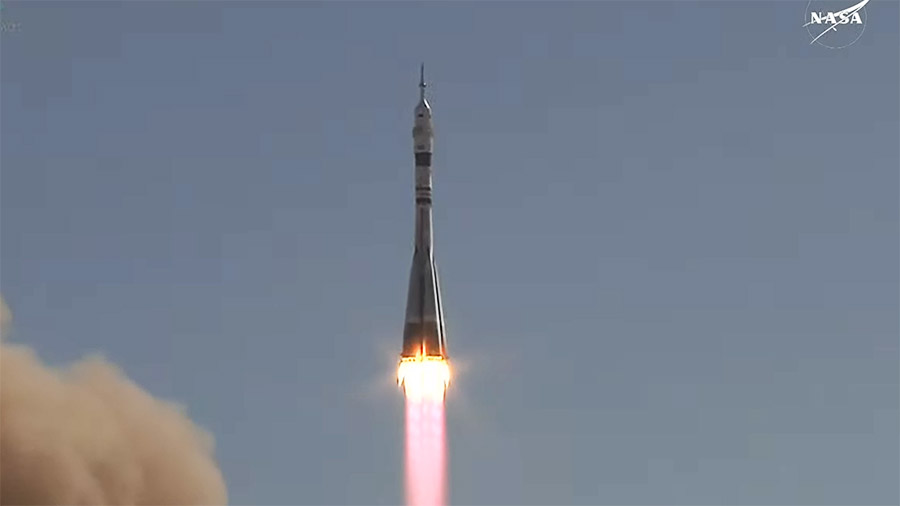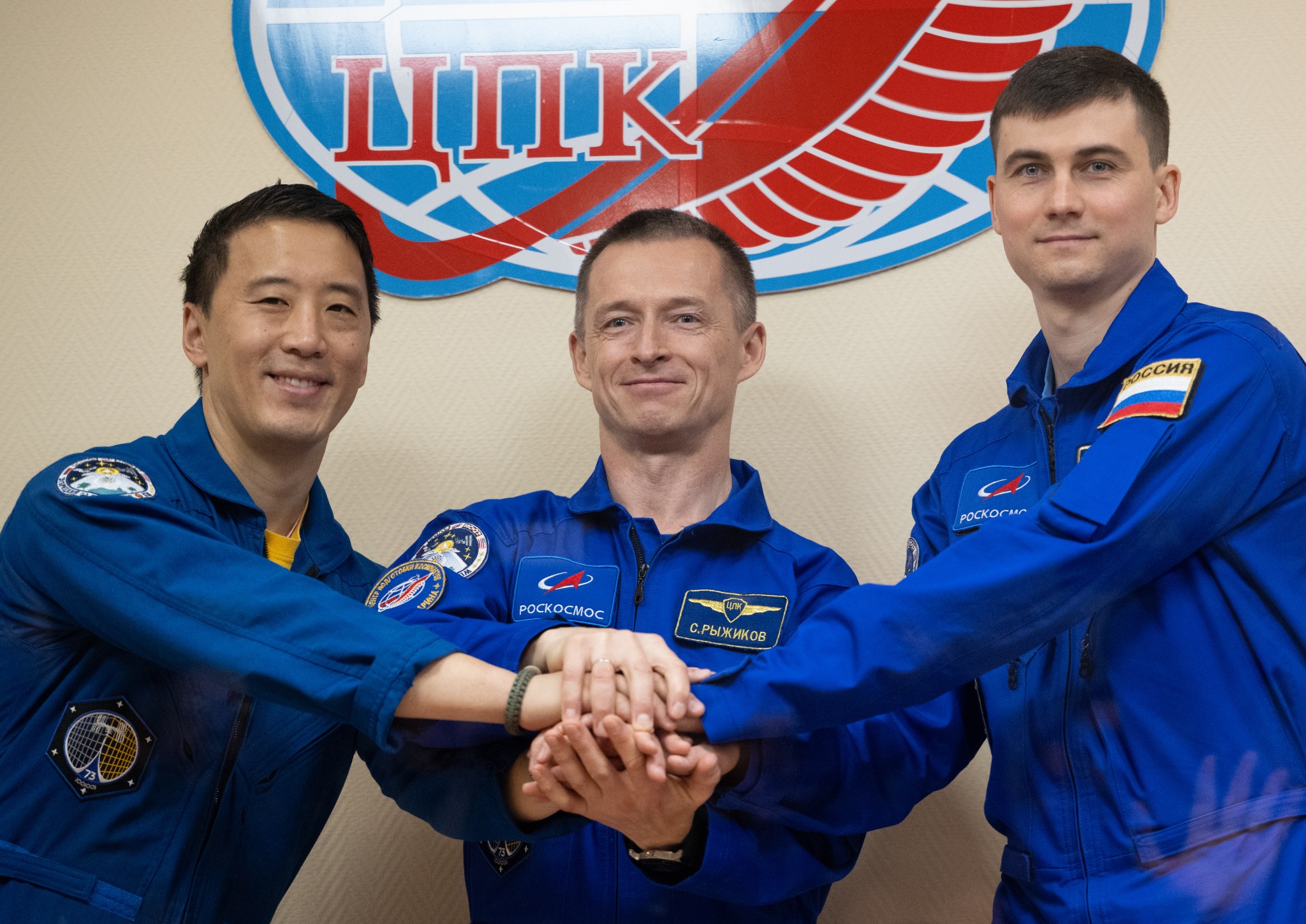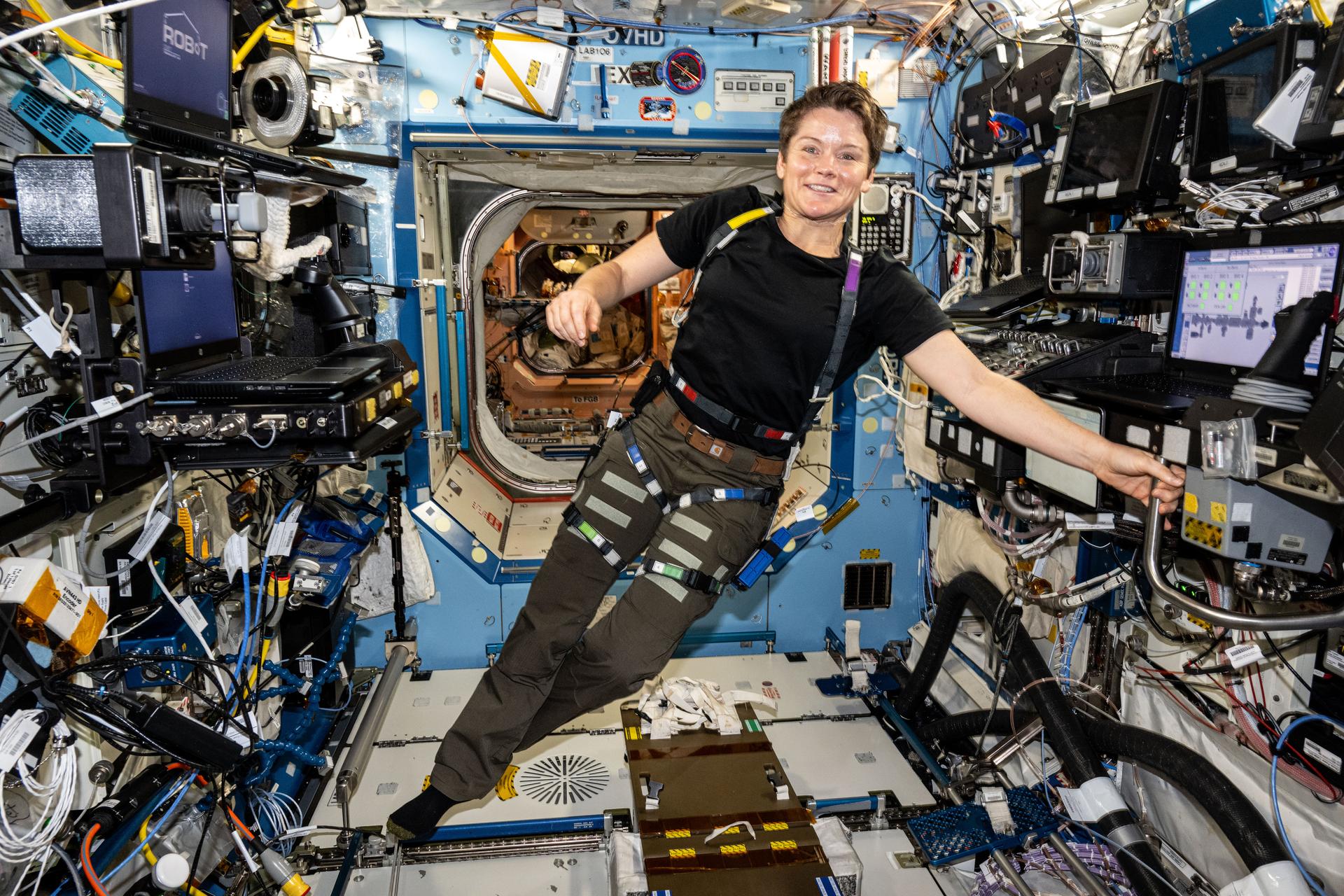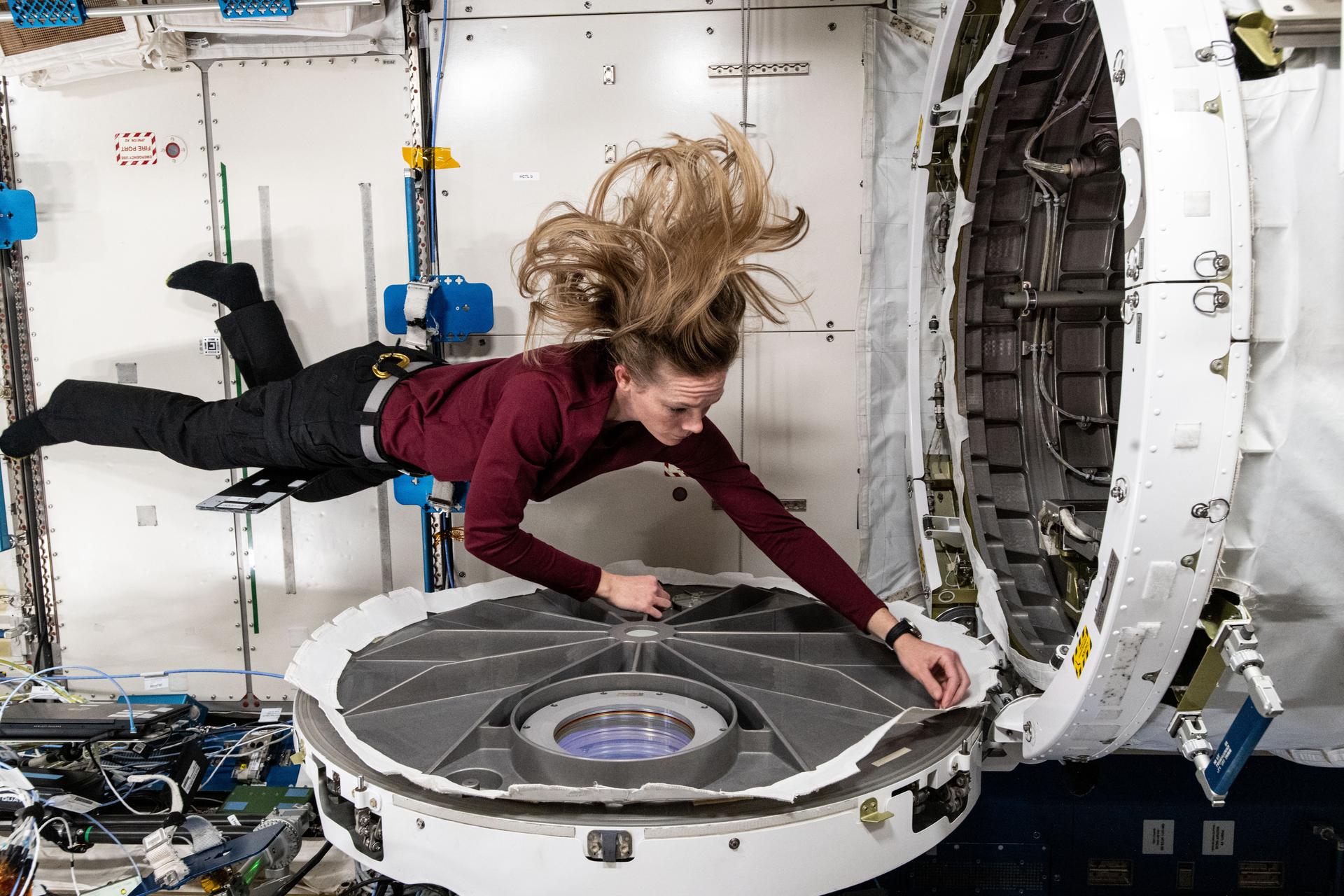Week Ends With Robotics, Exercise Research; New Crew Launches Tuesday
Robotics and exercise research wrapped up the week for the Expedition 72 crew aboard the International Space Station. The orbital residents also tested a thigh cuff that may reverse space-caused fluid shifts in astronauts and explored ways to prevent microbes from spreading on spacecraft.
Removing space debris and servicing satellites in orbit are key objectives to promote the commercialization of space. NASA is studying using robots as a way to perform these important tasks and protect space-based infrastructure. Flight Engineers Don Pettit of NASA and Takuya Onishi of JAXA (Japan Aerospace Exploration Agency) joined each other on Friday testing an Astrobee robotic free-flyer outfitted with tentacle-like grippers. They monitored the cube shaped Astrobee as it autonomously detected and maneuvered toward a “capture cube.” The grippers, with gecko-like adhesive pads, then extended toward the test object and grappled it. Engineers are demonstrating the robotic technology’s capability to capture objects made of different materials and textures.
Without Earth’s gravity impacting the human body, muscles and bones begin to atrophy since astronauts aren’t attached to the ground and spend less energy moving around a spacecraft. To offset those space-caused symptoms, as well as condition the cardiopulmonary system, crews exercise two hours a day every day on a variety of machines. Scientists monitor those workouts to understand how the body adapts to physical activity in microgravity and ensure crews stay healthy during long duration missions. NASA Flight Engineer Nichole Ayers pedaled on an exercise cycle while attached to sensors and breathing gear measuring how her heart and lungs respond to working out in weightlessness. Doctors will use the data to learn how space affects aerobic capacity, improve space workouts, and prepare astronauts for strenuous tasks such as spacewalks.
Ayers also joined Onishi as he wore a specialized thigh cuff that may change how fluids flow in a crew member’s body preventing head and eye pressure during spaceflight. Onishi wore electrodes on his chest while Ayers scanned his legs with the Ultrasound 2 device measuring his blood flow to determine the effectiveness of the thigh cuffs. At the end of the experiment, Onishi discussed the comfort, fit, and usability of the biomedical gear with a researcher on the ground.
Ayers and Pettit also took turns with NASA Flight Engineer Anne McClain and worked on spacesuit maintenance in the Quest airlock. The trio checked for suit oxygen leaks, replaced electronics components, and serviced life support gear. At the beginning of McClain’s day, she swabbed her body collecting biological samples and placed them in a science freezer for preservation and later analysis.
Roscosmos Flight Engineer Ivan Vagner collected samples of microbes growing inside the station to understand how they survive in space and learn how to keep the spacecraft environment biologically safe. Flight Engineer Kirill Peskov measured the amount of carbon dioxide in the station’s atmosphere then inspected and cleaned Roscosmos networking equipment. Station Commander Alexey Ovchinin continued readying the Soyuz MS-26 crew ship and its cargo for the return to Earth on April 19 with him, Vagner, and Pettit.
NASA astronaut Jonny Kim and Roscosmos cosmonauts Sergey Ryzhikov and Alexander Zubritsky are counting down to their launch aboard the Soyuz MS-27 spacecraft at 1:47 a.m. on April 8 from the Baikonur Cosmodrome in Kazakhstan to the orbital outpost. They will orbit Earth for just over three hours before docking to the Prichal docking module, joining the Expedition 72 crew, and beginning an eight-month research mission.
Learn more about station activities by following the space station blog, @space_station and @ISS_Research on X, as well as the ISS Facebook and ISS Instagram accounts.
Get the latest from NASA delivered every week. Subscribe here: https://www.nasa.gov/subscribe
Powered by WPeMatico
Get The Details…
Mark A. Garcia



